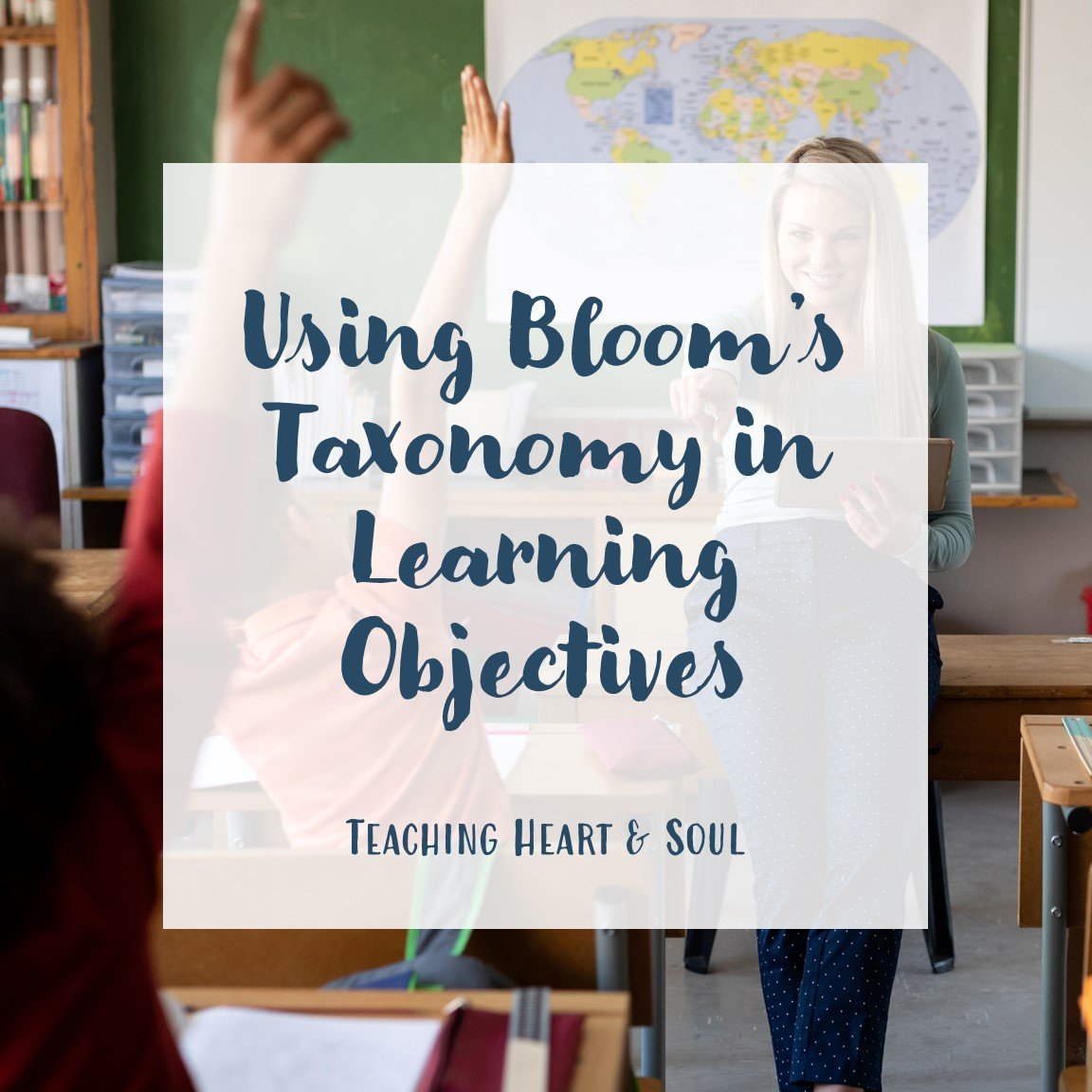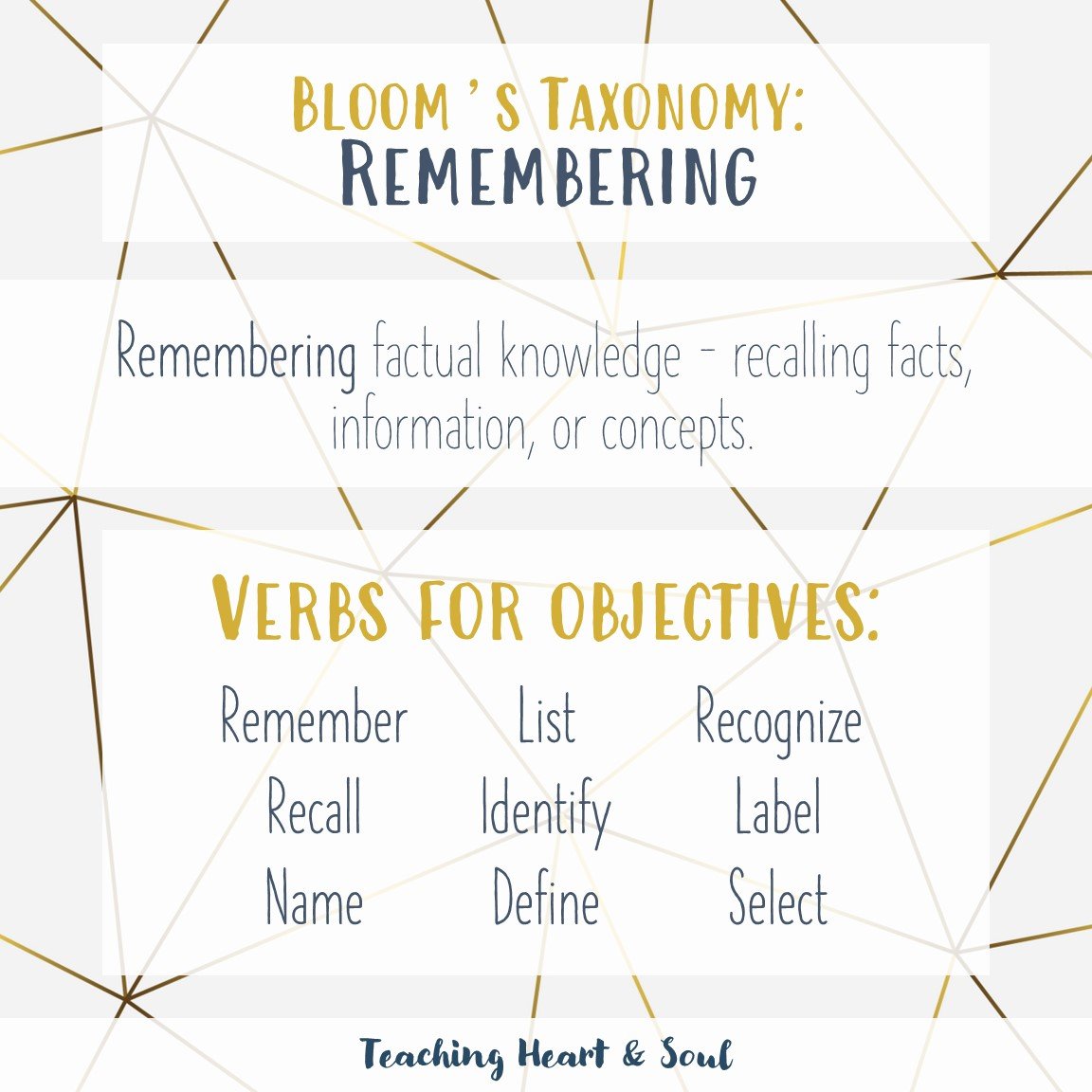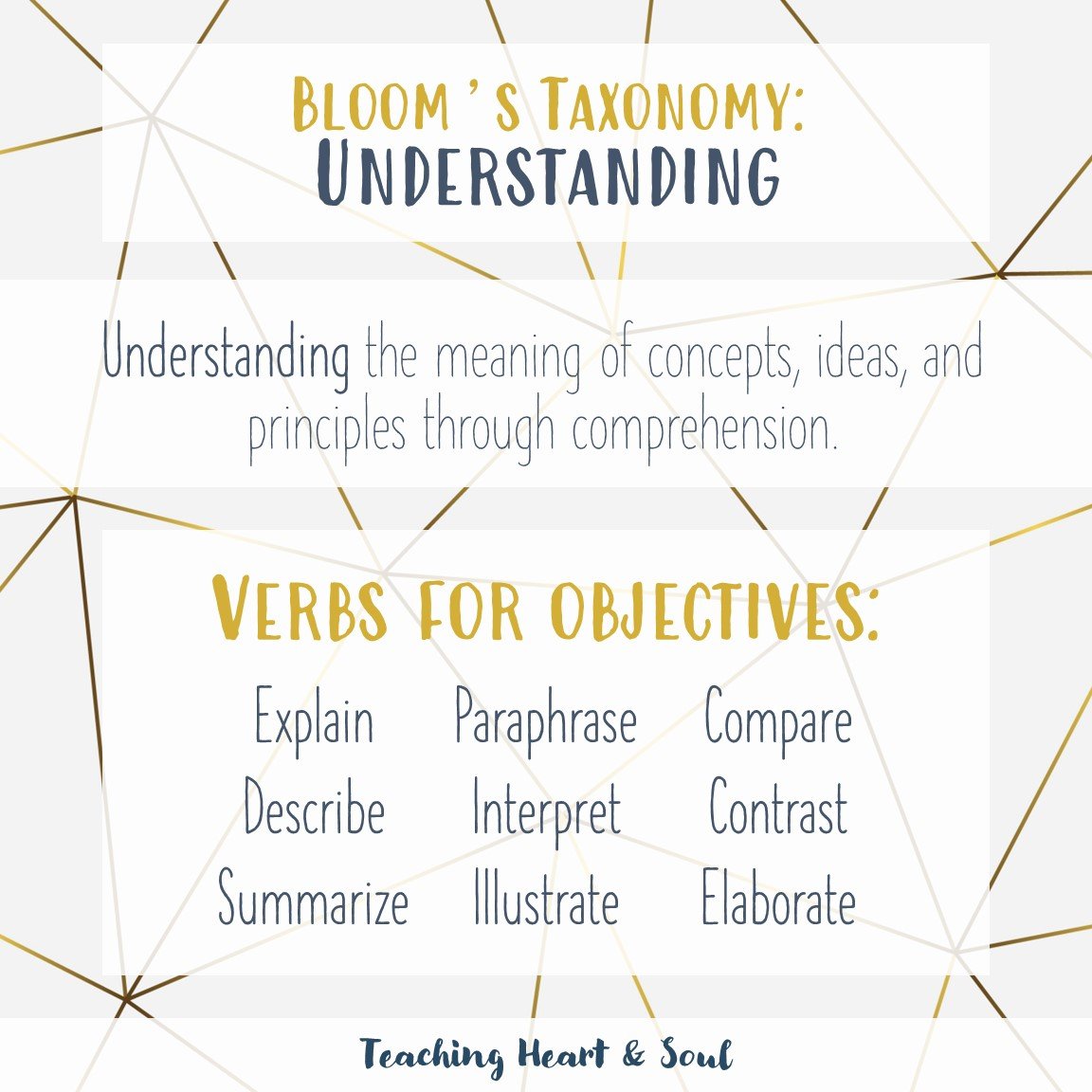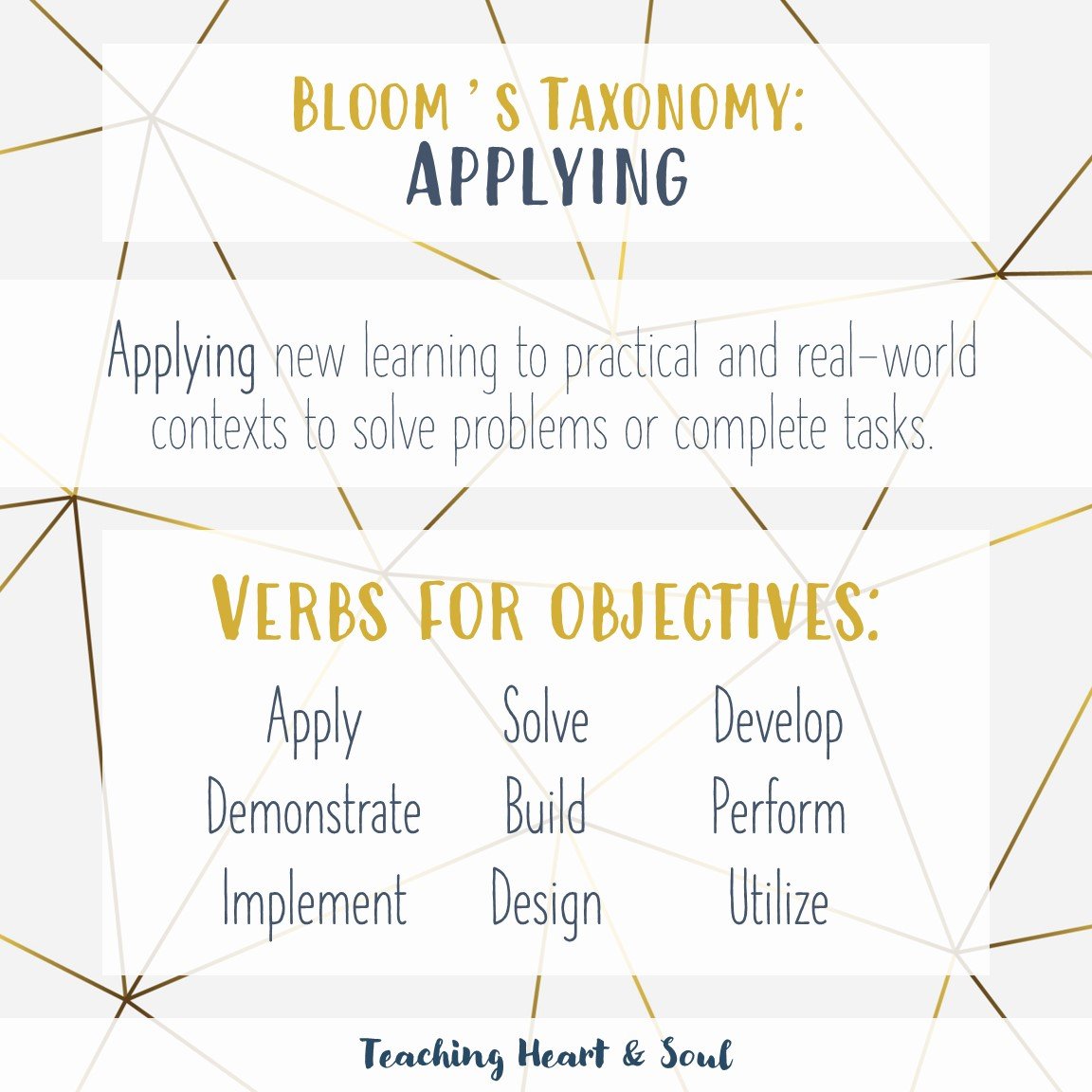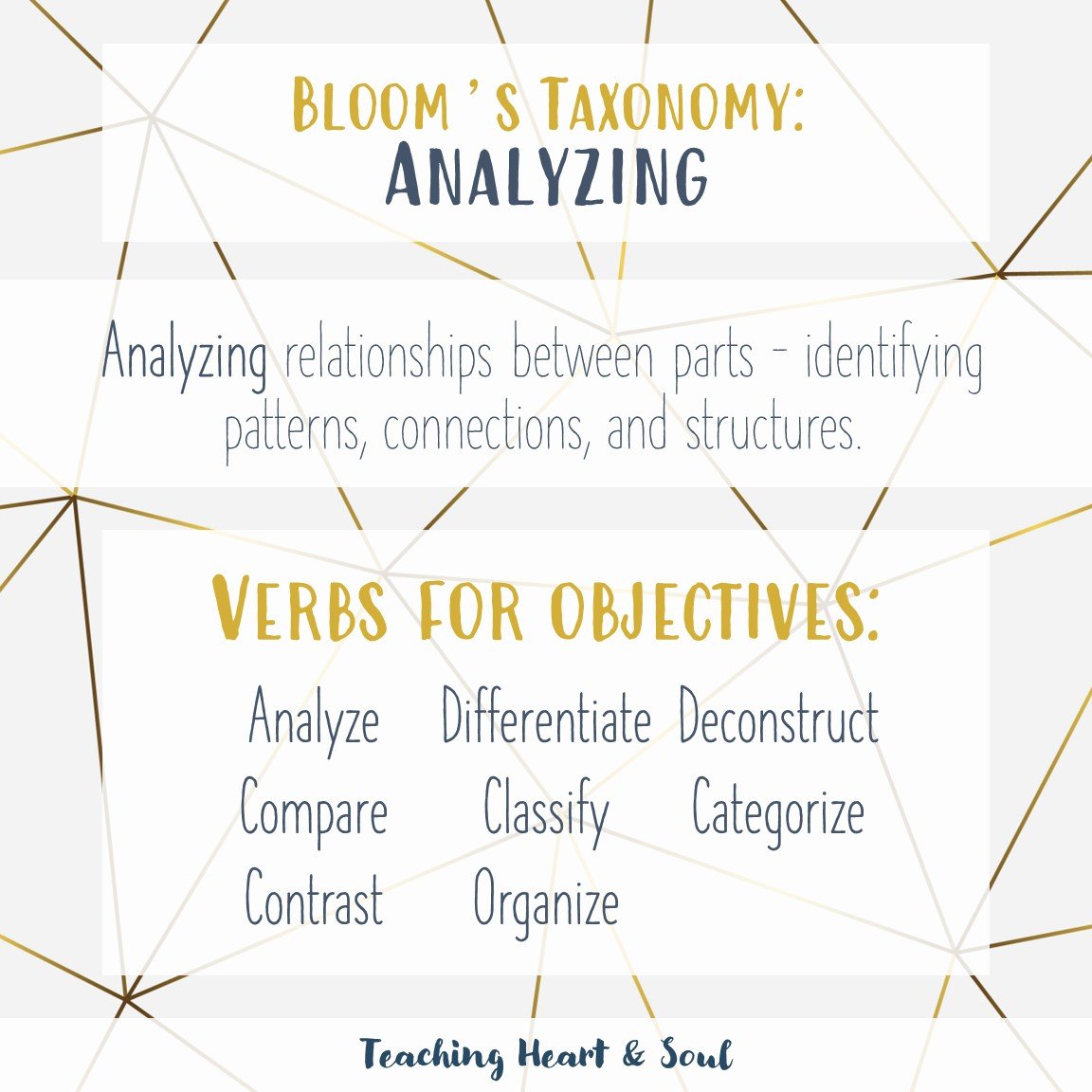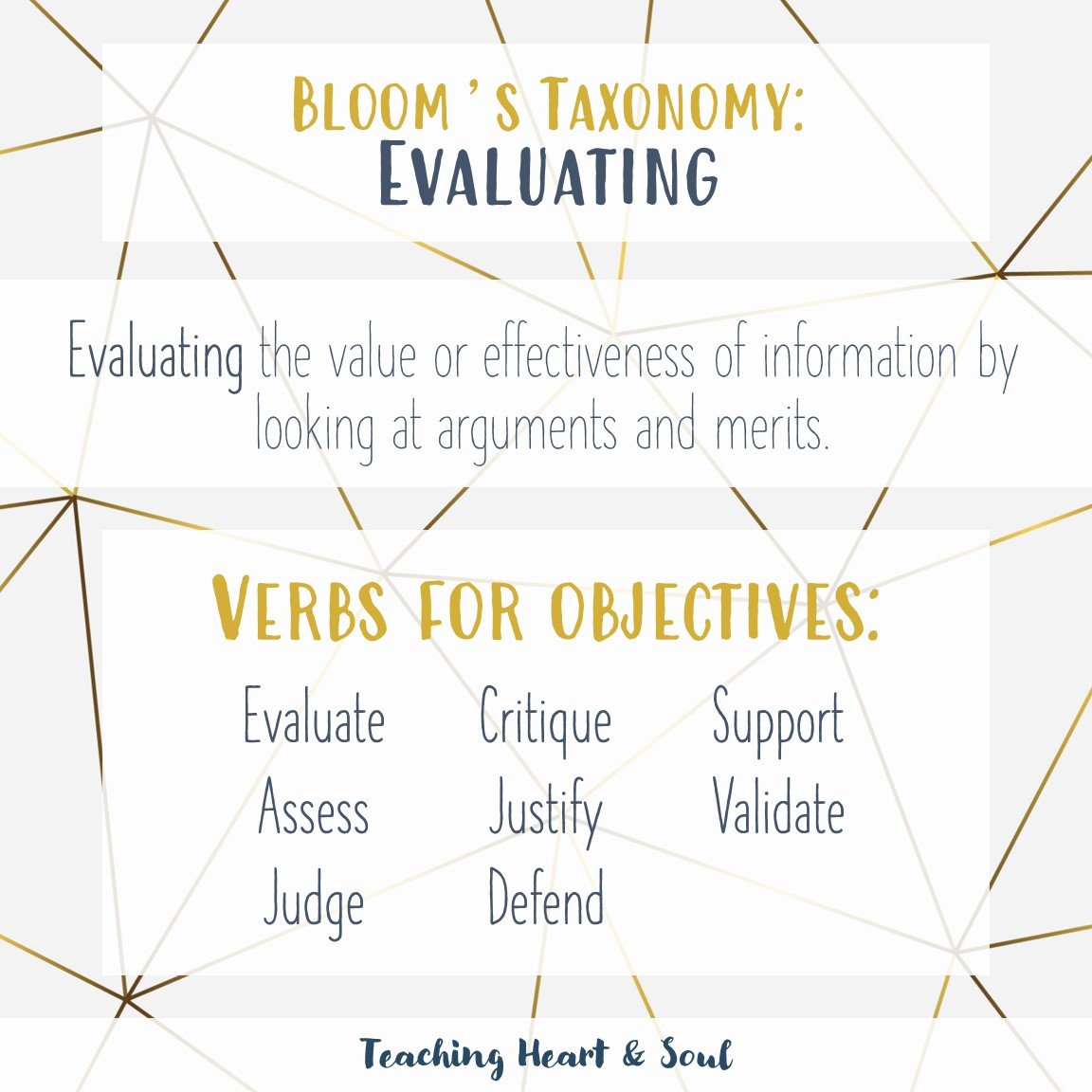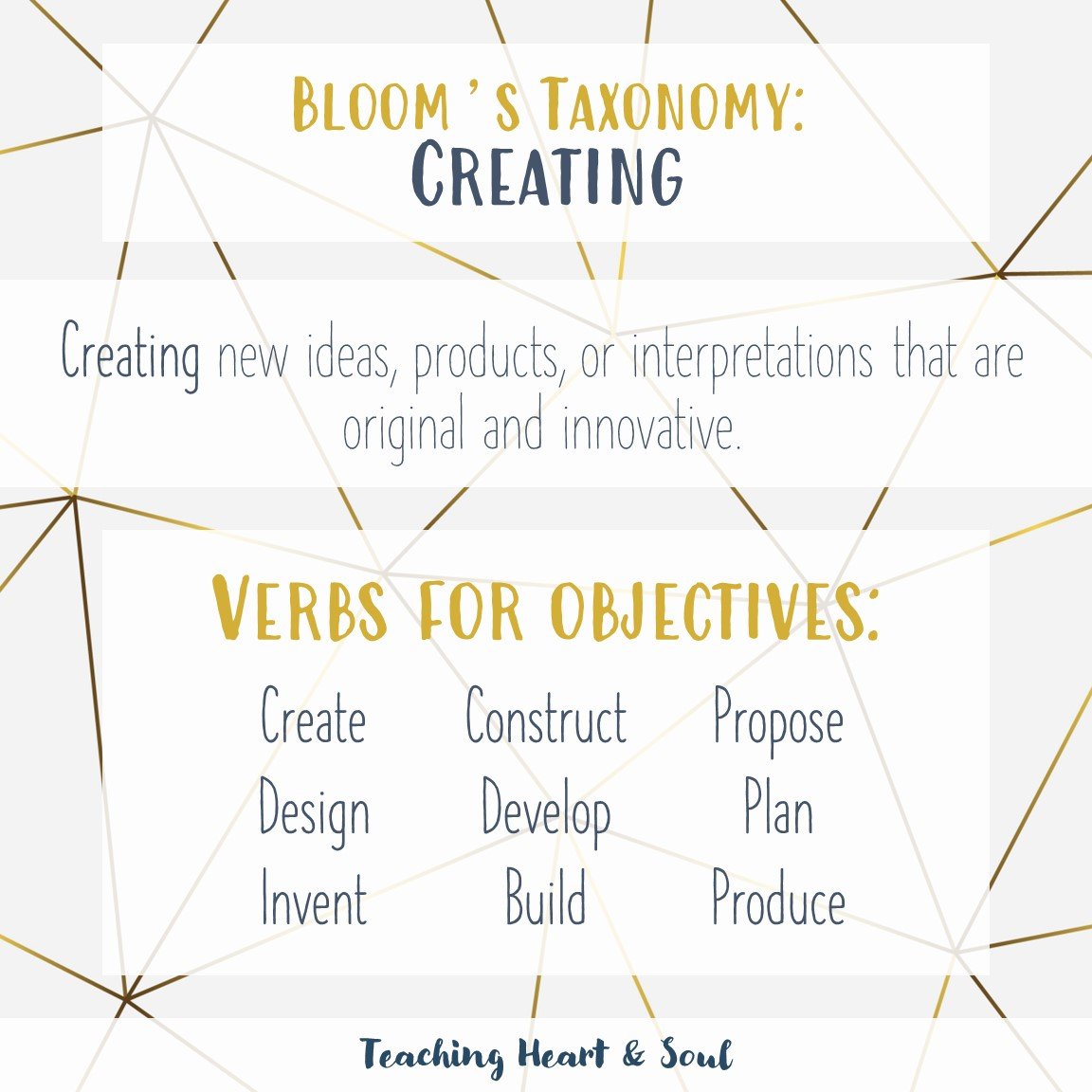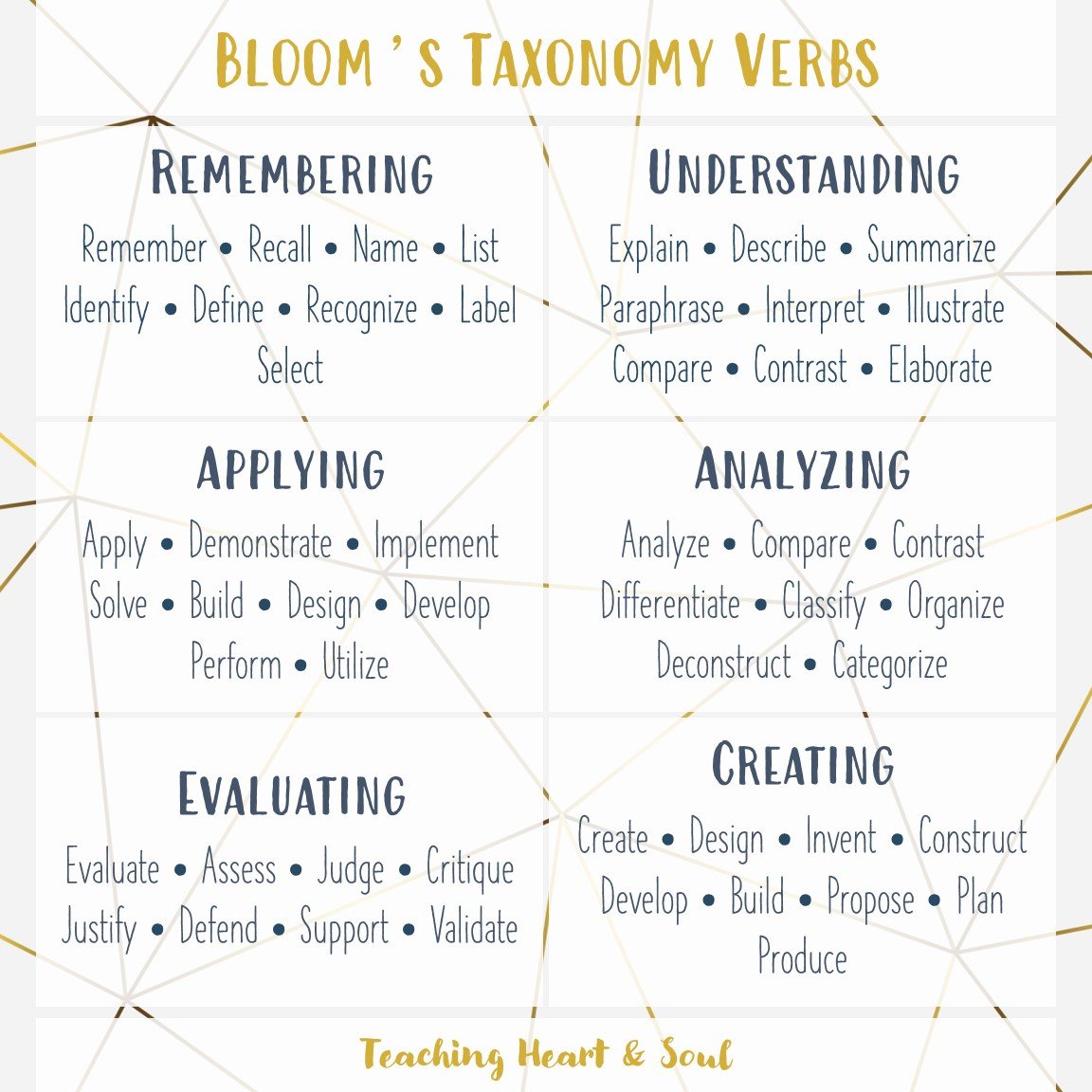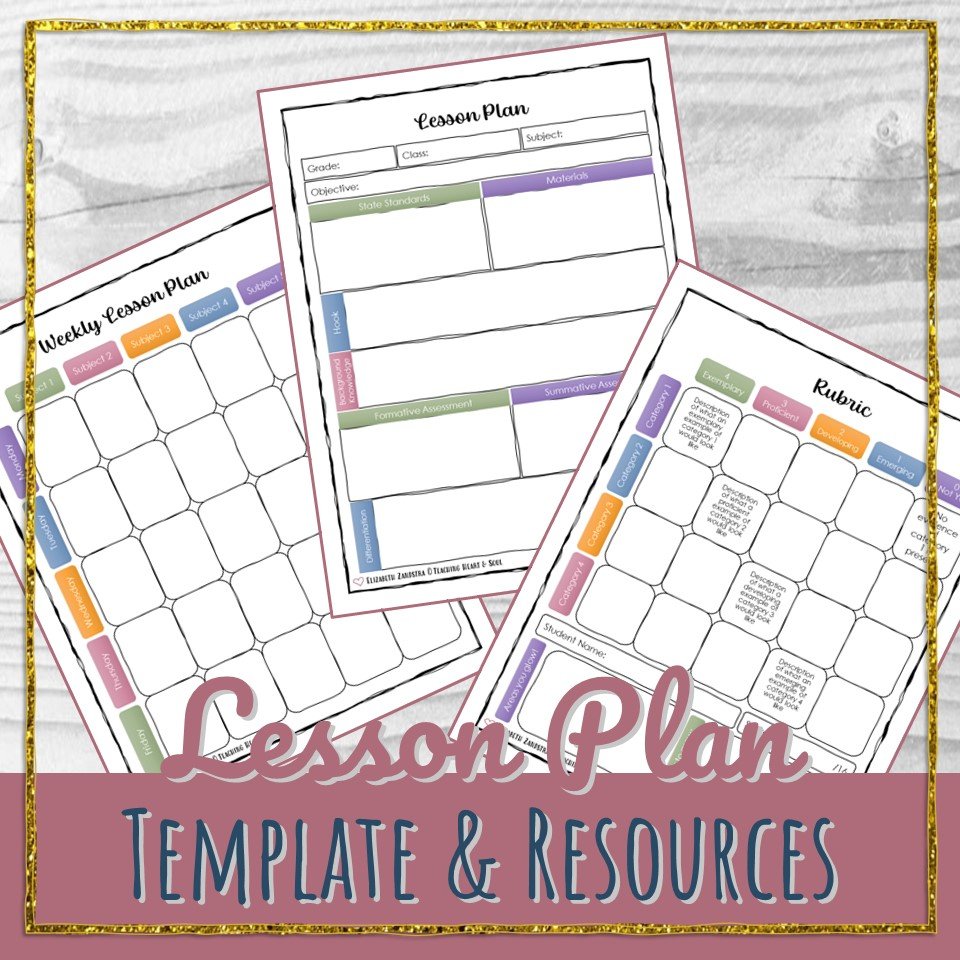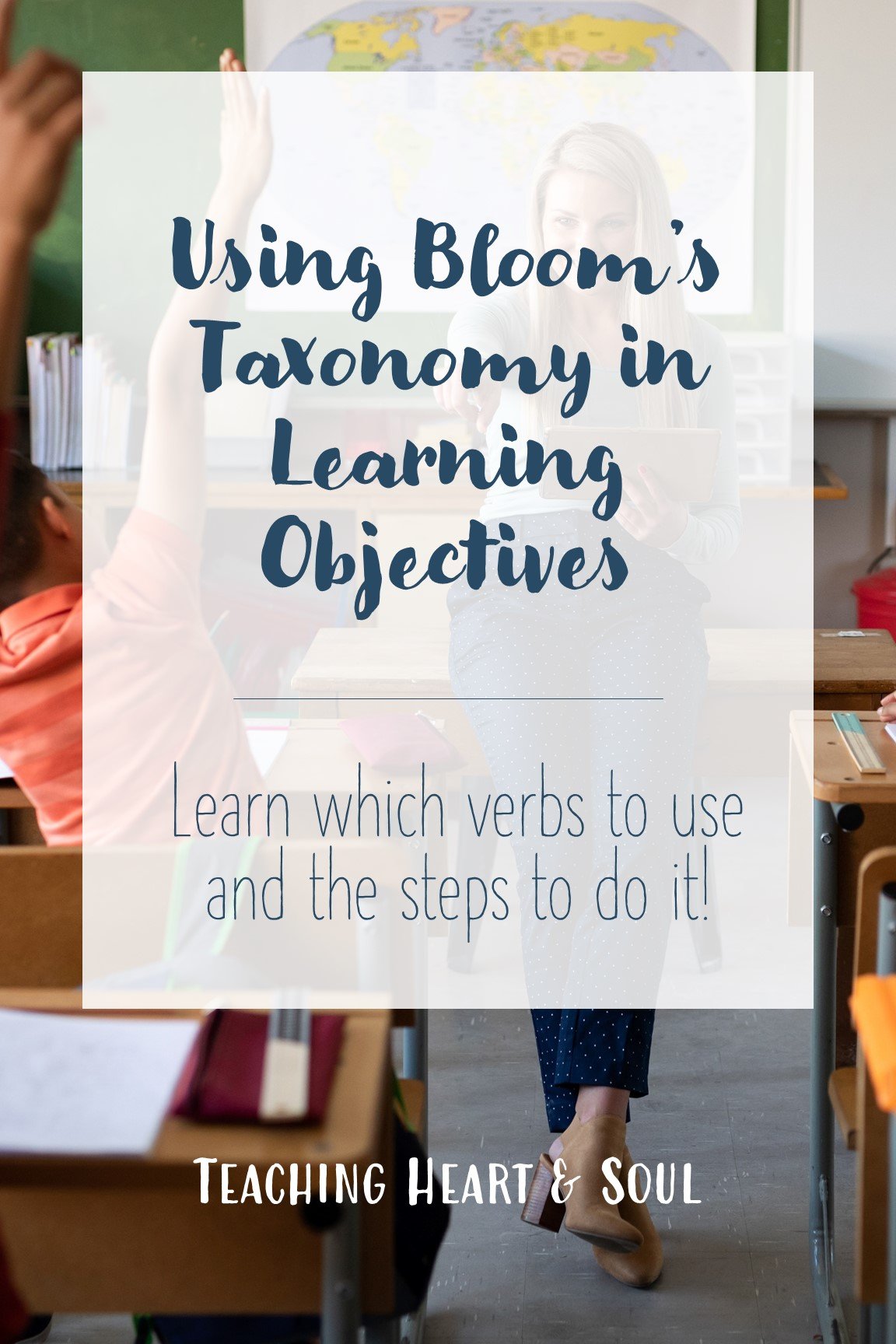Using Bloom's Taxonomy in Learning Objectives
What is Bloom's Taxonomy?
Bloom's Taxonomy is an educational framework created by Benjamin Bloom in 1956. It organizes cognitive tasks into six levels, starting with simple knowledge and ending with advanced evaluation. Teachers use it to design lessons that encourage critical thinking and problem-solving. Testing and assessment specialists use it to assess cognitive processes through thorough evaluation of the cognitive domain. By moving through these levels, students develop a more well-rounded understanding of the subject. It's a helpful tool to make learning engaging and effective!
The Revision of Bloom's Taxonomy
The revision of Bloom's Taxonomy is an updated version of the original taxonomy introduced by Benjamin Bloom. It incorporates modern educational practices and reflects the changing needs of learners in today's world. The revision still maintains the six levels of cognitive complexity but emphasizes the importance of active learning, creativity, and problem-solving. It provides educators with a more flexible and adaptable tool to design engaging and effective learning experiences for students. Overall, the revised Bloom's Taxonomy ensures that education stays relevant and meets the demands of a rapidly evolving world.
How Does Bloom's Taxonomy Impact Cognitive Processes?
Bloom's Taxonomy has a big impact on cognitive processes. It provides a structured way of learning that helps students think critically and creatively. By moving through different levels of complexity, students develop problem-solving skills and gain a deeper understanding of subjects. Teachers using Bloom's Taxonomy create engaging lessons that empower students to be active learners, preparing them for success in a changing world.
The Six Levels
The taxonomy of educational objectives is structured as a six-level hierarchy, representing different levels of cognitive complexity in learning. This hierarchical structure provides a clear progression of cognitive complexity, guiding educators in crafting learning objectives and fostering deeper thinking and understanding in students.
Remembering
The "remembering" level focuses on remembering factual knowledge - recalling facts, information, or concepts that students have been taught. This foundational level involves the ability to retrieve relevant knowledge from memory, but does not require understanding of the information.
Remembering involves simple recognition or rote memorization - being able to recall a date, vocab definition, or basic formula.
While this is an important first step, it builds the ground work for more complex cognitive skills.
Verbs for Remembering
Remember
Recall
Name
List
Identify
Define
Recognize
Label
Select
Understanding
At the "understanding" level of Bloom's Taxonomy, learners move beyond mere memorization and demonstrate their ability to comprehend and interpret information. This level involves conceptual knowledge - grasping the meaning of concepts, ideas, and principles rather than simply recalling them.
Students show understanding by explaining concepts in their own words, summarizing information, and interpreting the material in a meaningful way.
Understanding tasks may involve drawing connections between ideas, providing examples, or illustrating cause-and-effect relationships.
At this level, educators encourage students to make connections between new information and prior knowledge as they foster a deeper understanding and pave the way for more complex cognitive skills further up Bloom's Taxonomy's hierarchy.
Verbs for Understanding
Explain
Describe
Summarize
Paraphrase
Interpret
Illustrate
Compare
Contrast
Elaborate
Applying
At the "applying" level of the taxonomy of educational objectives, learners demonstrate their ability to take the knowledge they have acquired and apply it in practical and real-world contexts. This level moves beyond comprehension into procedural knowledge and requires students to use their knowledge and skills to solve problems, complete tasks, or create new solutions.
Applying tasks often involve using learned concepts in different situations, conducting experiments, or executing procedures. Students at this level are encouraged to make connections between theory and practice, demonstrating a deeper understanding of how the acquired knowledge can be utilized.
By engaging in application-based activities, students develop critical thinking skills and become more adept at transferring their learning to various scenarios, preparing them for real-life challenges and future learning endeavors.
Verbs for Applying
Apply
Demonstrate
Implement
Solve
Construct
Build
Design
Develop
Execute
Perform
Utilize
Analyzing
At the "analyzing" level of Bloom's Taxonomy, learners delve deeper into their understanding by breaking down information into its constituent parts and examining the relationships between them. This level goes beyond simple comprehension and requires students to identify patterns, connections, and underlying structures within the subject matter.
Analyzing tasks often involve comparing and contrasting, organizing information, and identifying cause-and-effect relationships. Students at this level are encouraged to think critically and objectively evaluate the components of a concept or problem. By engaging in analyzing activities, students develop higher-order thinking skills, becoming more proficient at examining complex issues and making informed judgments based on evidence and reasoning.
The analyzing level of Bloom's Taxonomy fosters a deeper appreciation for the intricacies of the subject matter and prepares students for more advanced cognitive challenges.
Verbs for Analyzing
Analyze
Compare
Contrast
Differentiate
Give an example
Identify patterns
Classify
Organize
Deconstruct
Categorize
Evaluating
At the "evaluating" level of Bloom's Taxonomy, learners demonstrate their ability to make judgments and assess the value or effectiveness of information, ideas, or concepts. This level goes beyond analyzing and requires students to critically evaluate the evidence, arguments, or merits of different perspectives.
Evaluating tasks often involve making informed decisions, forming opinions, and justifying their conclusions based on sound reasoning and evidence. Students at this level are encouraged to apply their knowledge and analytical skills to assess the strengths and weaknesses of various viewpoints. By engaging in evaluating activities, students develop their ability to think critically and independently, becoming more adept at making informed and well-reasoned judgments in various contexts.
The evaluating level of Bloom's Taxonomy fosters a deeper level of intellectual maturity and prepares students for sophisticated problem-solving and decision-making in their academic and personal lives.
Verbs for Evaluating
Evaluate
Assess
Judge
Critique
Justify
Defend
Support
Rate
Validate
Creating
At the highest level of Bloom's Taxonomy, the "creating" level, learners demonstrate their ability to generate new ideas, products, or interpretations. This level surpasses all previous levels and requires students to apply their knowledge, critical thinking, and problem-solving skills as well as abstract relations to develop original and innovative outcomes.
Creating tasks often involve designing, constructing, composing, or synthesizing elements to produce something entirely new. Students at this level are encouraged to think independently and take ownership of their learning by expressing their ideas and insights in novel ways. By engaging in creating activities, students not only demonstrate a deep understanding of the subject matter but also showcase their creativity and ingenuity.
The creating level of Bloom's Taxonomy fosters a sense of empowerment and achievement, allowing students to become active contributors to their learning process and inspiring them to explore new possibilities and avenues for personal and academic growth.
Verbs for Creating
Create
Design
Invent
Construct
Generate
Develop
Build
Propose
Plan
Produce
If you’d like a more complete list of verbs for each of the levels, you can print the resource below.
The Importance of Well-Defined Learning Objectives
Learning objectives are an important element to teaching, as they outline the specific goals of a lesson so that teachers can focus their instruction on key concepts and skills.
Well-crafted learning objectives provide a sense of direction and purpose for students, helping them understand what is expected of them and motivating them to actively engage in their learning. Additionally, defined objectives assist teachers in designing appropriate assessments that align with the desired outcomes, enabling them to measure students' progress accurately and identify areas that may require additional support.
Moreover, transparent learning objectives facilitate communication with parents and guardians, fostering a collaborative partnership in supporting each child's educational journey. Emphasizing the significance of well-defined learning objectives in the elementary classroom is essential for fostering a stimulating and effective learning environment that maximizes each student's potential for growth and success.
How to Write Educational Objectives
Writing a learning objective is easy if you follow these steps:
Align with standards and curriculum.
Because state standards have to be followed according to state and school policy, learning objectives should relate to the standards to keep teachers focused.
Identify the desired outcome.
Standards and objectives have an end goal in mind. What is that end goal? Base your objective around the skill students should learn.
Use action verbs.
Use action verbs to ensure your objectives are actionable.
"Students will compare and contrast X and X." is better than "Students will know the differences between X and X."
Be specific and measurable.
Being specific is partly finding the right verb to use in the objective. Avoid vague terms. Instead, use phrasing that can be observed or evaluated to determine student progress.
Focus on one objective at a time.
Some state standards may need to be broken up into pieces so that one skill from the standard is listed as one objective.
For example, the opinion writing standard "Introduce a topic or text clearly, state an opinion, and create an organizational structure in which related ideas are grouped to support the writer’s purpose." should be broken down into several objectives:
Students will clearly introduce the topic.
Student will state their opinion in the introduction.
Students will group related ideas together.
Consider the level of Bloom's Taxonomy.
An introductory lesson may require students to demonstrate lower level skills of the Bloom's Taxonomy hierarchy. However, a capstone project will draw on students higher-order thinking.
Include conditions and criteria.
You may want to be specific with your objective and include clarifying information, such as the number of paragraphs required in an essay. Consider the following examples:
The student will draft an opinion essay.
VS
The student will draft a 5-paragraph opinion essay.
Make it student-centered.
Learning objectives should be presented at the beginning of a lesson to direct students. Consequently, learning outcomes should be written with the student in mind in student-friendly language.
Learning Objective Examples
It can be helpful to see exactly what clear learning objectives should look like. Here are some examples:
Students will identify and explain the main idea and supporting details of a given text, using evidence from the text to support their responses.
Students will describe the character traits of one of the characters from the novel.
Students will develop a short story that implements sensory language to describe the setting.
Students will identify three environmental issues affect the local community.
Students will produce persuasive speech by presenting logical, well-reasoned arguments.
Students will label which adaptations 10 different animals have to survive in their environments.
How to Include Bloom's Taxonomy in Learning Objectives
With an understanding of Bloom's Taxonomy of educational objectives, as well as how to write clear learning outcomes, it becomes easy to combine the two ideas to create educational objectives that outline educational goals in a hierarchical way, leading the learner through foundational knowledge skills through higher mental processes into abstract knowledge.
The appropriate instruction can only be given when thinkers encounter higher level skills after already mastering the basic elements.
Educational objectives should be written for a unit or for the evolution of a skill, climbing the hierarchy of the revised taxonomy throughout the unit or progression.
So, using bloom's level key verbs a unit can move from factual knowledge, through the intermediate stage, into creation. Let's see what this looks like for a unit on opinion essays.
Remembering
After this lesson, students will be able to identify the key elements of an opinion essay - the introduction naming the opinion; the body paragraphs that include the reasons, facts, and details; and the conclusion related to the opinion.
Understanding
After this lesson, students will explain the purpose of an opinion essay and describe the difference between opinions and facts.
Applying
After this lesson, students will apply their knowledge by selecting a topic for their opinion essay and creating a clear and concise thesis statement that presents their opinion on the chosen topic.
Analyzing
After this lesson, students will analyze the strength of arguments in different opinion essays. They will evaluate and compare the effectiveness of supporting evidence used by other authors and identify areas for improvement in their own writing.
Evaluating
After this lesson, students will assess their own opinion essays and those of their peers. They will provide constructive feedback on the organization, clarity, and persuasiveness of the arguments, helping each other refine their essays.
Creating
At the end of the unit, students will create their own well-structured opinion essay. They will craft a compelling thesis statement, develop coherent paragraphs with supporting evidence, and conclude their essays with a strong closing statement. Students will also have the opportunity to present their essays to the class, showcasing their ability to articulate and defend their opinions confidently.
Resources
Click on the images below to access the resources.
Conclusion
In conclusion, incorporating Bloom's Taxonomy into learning objectives is a fundamental step in fostering comprehensive educational outcomes. By aligning the educational goals with the cognitive domain, students can develop not only conceptual knowledge but also crucial cognitive skills and metacognitive knowledge.
To achieve this, educators should employ clear learning objectives with measurable verbs, allowing learners to analyze, classify, and solve problems at various levels, encompassing both higher and lower-order thinking.
Additionally, it is essential to recognize the significance of formative assessments, which offer valuable feedback during the learning process and contribute to a more dynamic conception of the subject matter. Emphasizing subject-specific skills and techniques further enhances the learners' ability to encounter challenges and demonstrate acquired knowledge effectively.
Moreover, category-contained subcategories play a vital role in categorizing educational goals, facilitating a structured approach to the curriculum. By embracing Bloom's Taxonomy, educators can design appropriate instruction tailored to individual needs and support students in reaching their full potential.
Through a well-elaborated framework, students can navigate through the six major categories, acquiring foundational and abstract knowledge while also acquiring psychomotor skills. As educational researchers and instructional specialists publish their findings, the relevance of Bloom's Taxonomy underscored as a timeless pedagogical tool, guiding the entire course of education with its somewhat static yet valuable notions.
Ultimately, by adopting the terminology knowledge and dynamic conception within learning objectives, educators can draw attention to the importance of developing higher-level cognitive processes, enabling learners to become critical thinkers and lifelong learners, well-equipped to succeed in diverse academic and real-life contexts.
Further Reading
Learn how to create lesson plans HERE.
Check out how to include lesson hooks in your lesson plans HERE.
Find out how to differentiate HERE.
Learn how to facilitate active learning HERE.
If you want to learn about exit tickets, click HERE.
